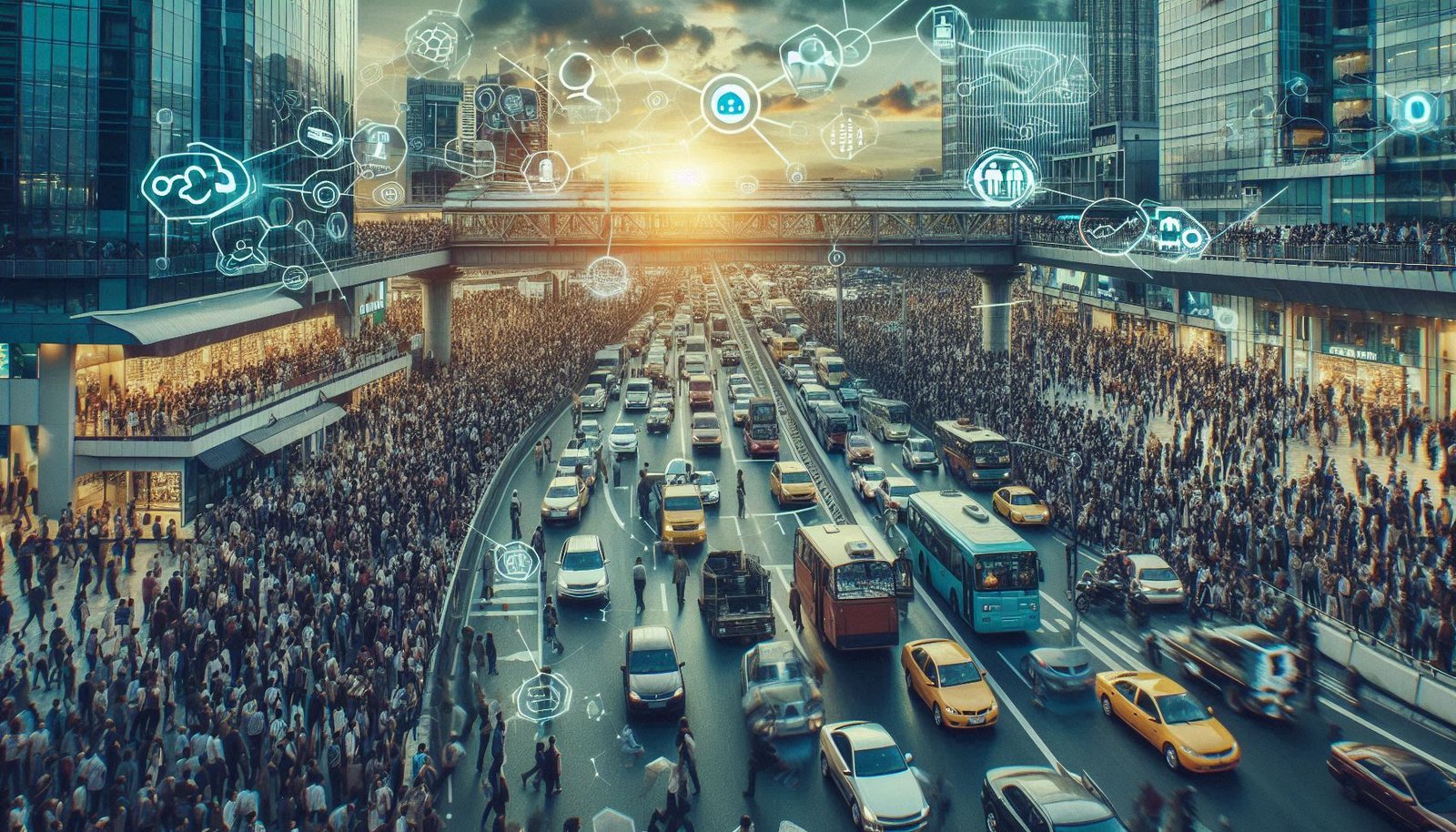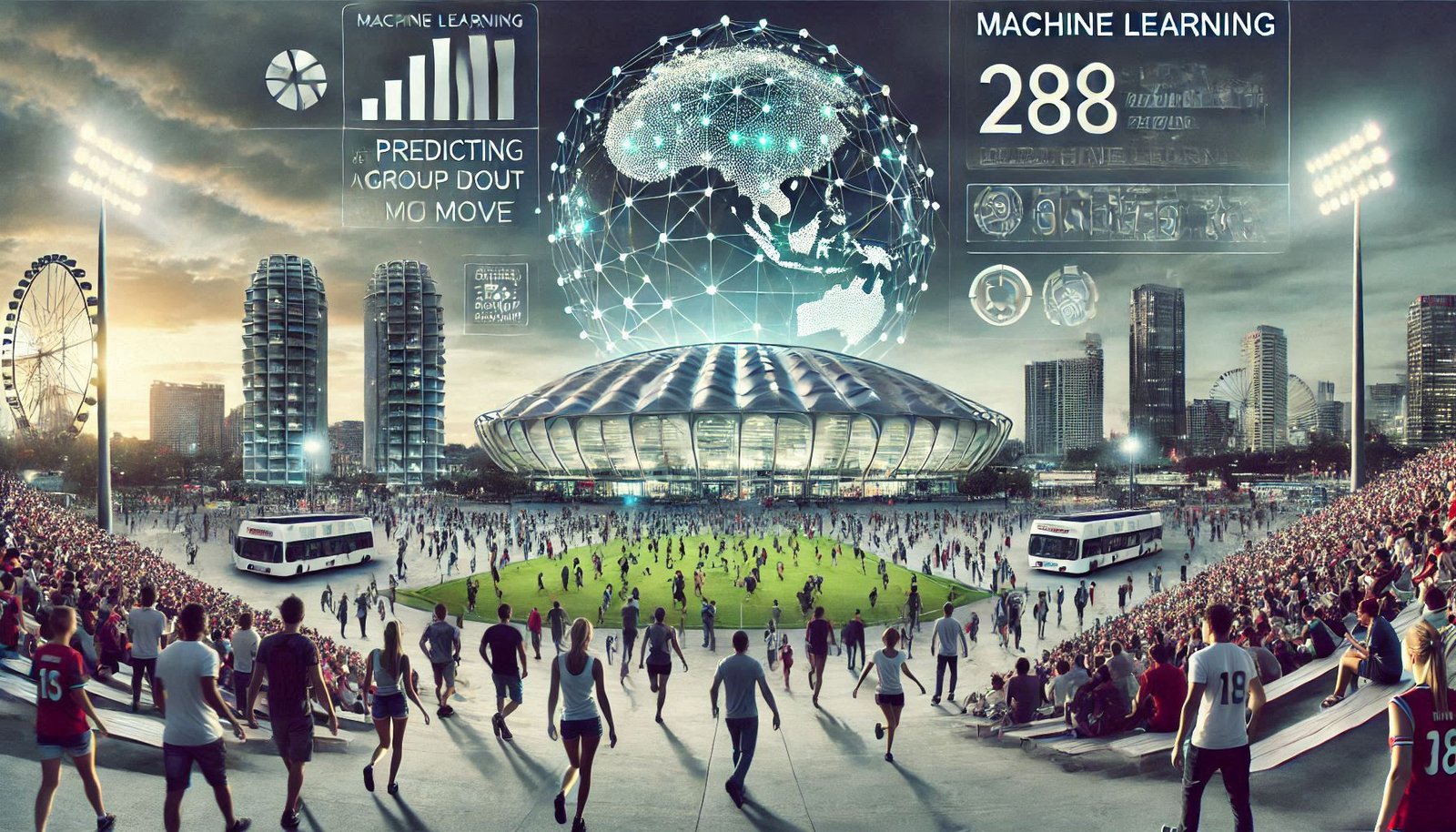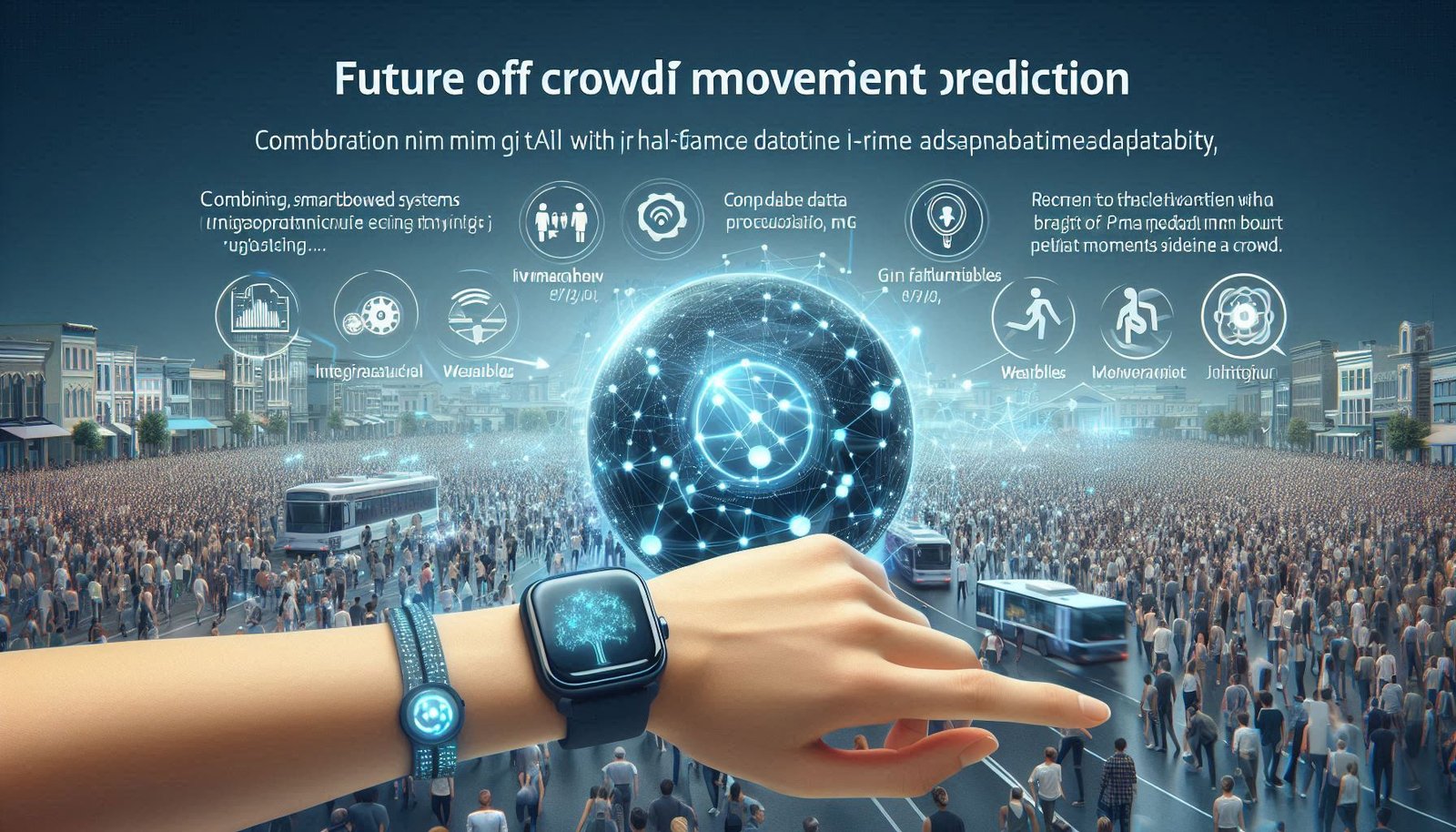With numerous sectors namely event management, transportation, urban planning, safety, etc. crowd movement prediction is gaining more significant importance in today’s time. Thanks to advances in technology, especially Machine Learning (ML), we can predict how millions of people will move and act during their time in a variety of environments. In this article we will discuss All about the Machine Learning in predicting crowd movements, its features, approaches, advantages, challenges and real world use cases.

Table of Contents
- Introduction
- What is Crowd Movement Prediction?
- Role of Machine Learning in Predicting Crowd Movements
- Key Components of Crowd Movement Prediction
- Popular Machine Learning Algorithms Used
- Applications of Machine Learning in Crowd Prediction
- Benefits of Using Machine Learning for Crowd Prediction
- Challenges in Predicting Crowd Movements
- Future of Crowd Movement Prediction
- Frequently Asked Questions (FAQs)
- Conclusion
1. Introduction
In today’s world, predicting the way a group move can help enable more efficient and safer public spaces. From massive sports events to city traffic management, predicting how people spread out could help avoid congestion, mitigate risk and optimize operations. Machine Learning is a subset of artificial intelligence that allows systems to learn patterns from data and make accurate predictions.
In this article we will explore how Machine Learning is used in predicting crowd movements and how crucial the importance of this technology in various fields.

2. What is Crowd Movement Prediction?
As a subtopic of crowd science, crowd movement prediction pertains to predicting the motion behavior of a large number of people in certain environments. The idea is to predict where and how people will be at any time in the future and how crowd density will evolve.
Factors that can affect crowd movements include:
- Location: If people are indoors at a stadium versus outdoors in a public setting.
- Type of event: Different crowd dynamics exist for concerts, protests, and public celebrations.
- Competitiveness: End-users threats, pricing and other external players
3. Role of Machine Learning in Predicting Crowd Movements
Crowds movement is effectively predicted using Machine Learning-It identifies patterns and trends from existing large datasets which improve accuracy. Rather than employing traditional rule-based systems, ML models learn from each new piece of data and refine their predictions as new information becomes available.
Key Roles of ML in Crowd Prediction:
- Cameras and Sensors: Placing surveillance cameras or infrared sensors in the key areas can provide data on the number of people as well as their movement.
- Mobile Devices: People’s mobile phones can certainly provide relevant data on their location, movement patterns, and behavior.
- Optimizing Resources: By understanding where people are likely to move, event organizers can allocate resources such as staff or signage more efficiently.
4. Key Components of Crowd Movement Prediction
There are several important steps involved in predicting crowd movements using Machine Learning.
Next, we will introduce the various types of models for the prediction of crowd movements.
4.1 Data Collection
The first step in crowd prediction is gathering the right data. This data is typically collected through:
- Cameras and Sensors: Installing monitoring cameras or infrared sensors in the important areas can give insights about the count and motion of the persons.
- Mobile Devices: An individual’s mobile phone can certainly provide relevant data on a person’s location, movement patterns and behavior.
- Public Transport Systems: Data from buses, trains, and other transport systems can offer insights into crowd density and flow.
4.2 Feature Engineering
Feature engineering involves transforming raw data into meaningful input for ML models. Some common features used in crowd prediction include:
- Crowd Density: The people / unit area
- Velocity: How fast people are moving.
- Location: GPS coordinates or sensor data.
- Time of Day: Crowds behave differently during peak hours.
4.3 Model Building
After the data is collected and features are engineered time to build the Machine Learning model. Next, we will introduce the various types of models for the prediction of crowd movements.
5. Popular Machine Learning Algorithms Used
Several Machine Learning algorithms are widely used for crowd movement prediction. Depending on the complexity of the data and the type of prediction needed, different algorithms can be implemented.
5.1 Regression Models
Regression models predict continuous variables such as crowd density or the number of people expected at a certain location.
5.2 Neural Networks
Neural Networks Are Deep Learning Models That Can Take in Complex Sets of Data with the Most Accurate Predictions They are especially good at identifying patterns in video or sensor data.
5.3 Decision Trees and Random Forests
Decision trees split the data based on certain features, making it easier to identify significant patterns. Random Forests are ensembles of decision trees, improving the accuracy and robustness of predictions. Machine Learning in Predicting Crowd Movements
6. Applications of Machine Learning in Crowd Prediction
Machine Learning for crowd prediction has a wide range of practical applications. Let’s explore some of the key use cases.
6.1 Event Management
ML models can predict crowd movement and help organizers:
- Allocate security personnel.
- Plan evacuation routes.
- Ensure smooth entry and exit for attendees.
6.2 Transportation Systems
In busy transportation hubs like train stations and airports, predicting crowd movements can help:
- Minimize congestion.
- Provide accurate real-time updates.
- Optimize the deployment of staff and resources.
6.3 Urban Planning and Safety
Machine learning helps urban planners predict crowd movements in cities, allowing them to:
- Design more efficient pedestrian pathways.
- Keep a distance in densely populated areas.
- In emergencies, divert movement to safer areas to promote crowd safety.
7. Benefits of Using Machine Learning for Crowd Prediction
Using ML for crowd prediction offers a variety of advantages, including:
7.1 Efficiency
ML algorithms can process vast amounts of data quickly and efficiently, delivering real-time predictions that are vital for managing large crowds.
7.2 Accuracy
Machine Learning models improve with time and data, increasing their accuracy and reducing errors in crowd behavior predictions.
7.3 Cost Savings
This would reduce unnecessary manual over-monitoring (like in 2023 at major events across the globe) while assisting in more efficient resource allocation, saving money in the long-run.
8. Challenges in Predicting Crowd Movements
Despite its benefits, predicting crowd movements with Machine Learning presents several challenges:
8.1 Data Quality and Availability
The success of ML models depends heavily on the quality and availability of data. Incomplete or inaccurate data can lead to poor predictions.
8.2 Privacy Concerns
Crowd prediction systems often rely on personal data, such as location information from mobile devices. This raises concerns about privacy and data protection.
8.3 Scalability
As crowds grow larger, the complexity of predicting movement increases. Machine Learning models may face difficulties handling large-scale data in real-time. (Machine Learning in Predicting Crowd Movements)
9. Future of Crowd Movement Prediction
The future of crowd movement prediction looks promising with the integration of new technologies:
- AI Integration: Combining ML with AI-powered systems will enhance predictive accuracy and real-time adaptability.
- Wearables — Using smartwatches and other wearable devices can give more granular data about individual movements inside a crowd.
- 5G Technology: Faster data processing with 5G networks will enable even more efficient real-time crowd predictions.

10. Frequently Asked Questions (FAQs)
1. What is the main goal of predicting crowd movements?
The main goal is to ensure safety, improve efficiency, and optimize resource allocation in public spaces or events.
2. How accurate are Machine Learning models in predicting crowd movements?
Machine Learning models are as good as the data, the algorithm, and how much of the data the model has learnt from. Typically, they can provide very good accuracy, especially for real-time data.
3. What kind of data is required for crowd prediction?
It can feed from a number of sources including cameras, sensors, GPS data, and even public transport networks. The more complete the data, the bigger the forecast.
4. Can Machine Learning predict crowd behavior in emergencies?
Yes, ML models can be trained to identify patterns in crowd behavior during emergencies, allowing authorities to take proactive measures.
11. Conclusion
Prediction of crowd movement was revolutionized by Machine Learning, brining more UTC and improved safety when speaking about well-being and emergency situations. Machine learning (ML) models can work based on the data provided to them from sensors, cameras, or even mobile devices, by providing predictions in real-time; thereby helping manage crowding in the economy, events, and transportation systems, and so forth.
Initiatives such as those outlined above in the context of crowd prediction offer exciting new ways to utilize collective intelligence for enhanced decision-making, bolstered by innovative technology advances, such as AI and 5G, which will continue to play an instrumental role in improving the accuracy of these systems, the viability of which will no doubt help us to unlock the real potential of crowds.
